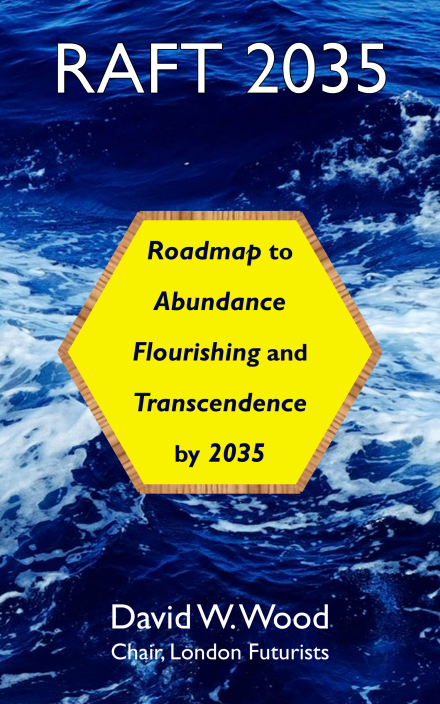This page contains the opening portion of Chapter 16 of RAFT 2035.
Copyright © 2020 David W. Wood. All rights reserved.
16. Bubbling under
RAFT is far from being a fixed and complete model. It is expected to grow and evolve in the months and years ahead.
As the ideas behind RAFT have been discussed ahead of publication, a number of other goals have been proposed for 2035, but have not yet been included in the main analysis. Borrowing a phrase from publishers of charts of the most popular music tracks, these goals can be said to be “bubbling under”: they are under the present threshold for inclusion, but have enough interest to be worth listing.
Selected examples are listed below, with a view to versions of these goals potentially being adopted more widely in due course.
A charter for individual liberties?
RAFT emphasises social collaboration, with “no one being left behind” against their will. This includes what can be called a principle of “active neighbourliness”: rather than keeping quiet about impending dangers about to befall someone, or major opportunities they are about to miss, we should find the way to speak up, just as we would ourselves like to be alerted to these dangers or opportunities in an equivalent circumstance.
At the same time, RAFT champions the fundamental importance of human individuality: individual flourishing should not be sacrificed or subordinated to collectivist goals. Society should protect and elevate all members of society. Individuals should never become cannon-fodder in service of some tribal, national, ethnic, religious, or ideological quest.
Balancing the principles of human individuality and active neighbourliness can be challenging at times. Might a new charter of individual liberties help?
This charter would clarify reasons to uphold important rights, as well as reasons why people should accept important responsibilities and limits. The interplay of these points can be subtle.
Merely the fact that someone desires to carry out some kind of medical or lifestyle experiment, and claims to be fully informed about all the risks and consequences, cannot, by itself, convey the right to proceed. That’s because the consequences of the experiment could extend beyond the person directly involved. Financial or social costs incurred by these third parties could far exceed what they expected.
However, the positive upsides to such an experiment could, likewise, exceed reasonable expectations. Therefore, care must be taken not to limit experimentation unnecessarily. Care is particularly required not to allow dominant subgroups to exert restrictive viewpoints over a community as a whole, obstructing innovation, where the effect of these restrictive viewpoints is to privilege existing power groups and to preserve the status quo.
In other words, there’s a need to take into account, not only the direct effect of a medical or lifestyle (etc) experiment, but also what are called the “externalities” of that experiment. Failure to do so would be akin to commending a company whose profits depended on them hiding flows of waste pollution they are generating. Another comparison is with overlooking the “moral hazard” that arises from an otherwise commendable act of generosity or forgiveness.
Two terms that are heard in this discussion are “precautionary” and “proactionary”. It is sometimes implied that a one-time choice must be made between these two poles. In reality, both principles are needed.
<snip>

